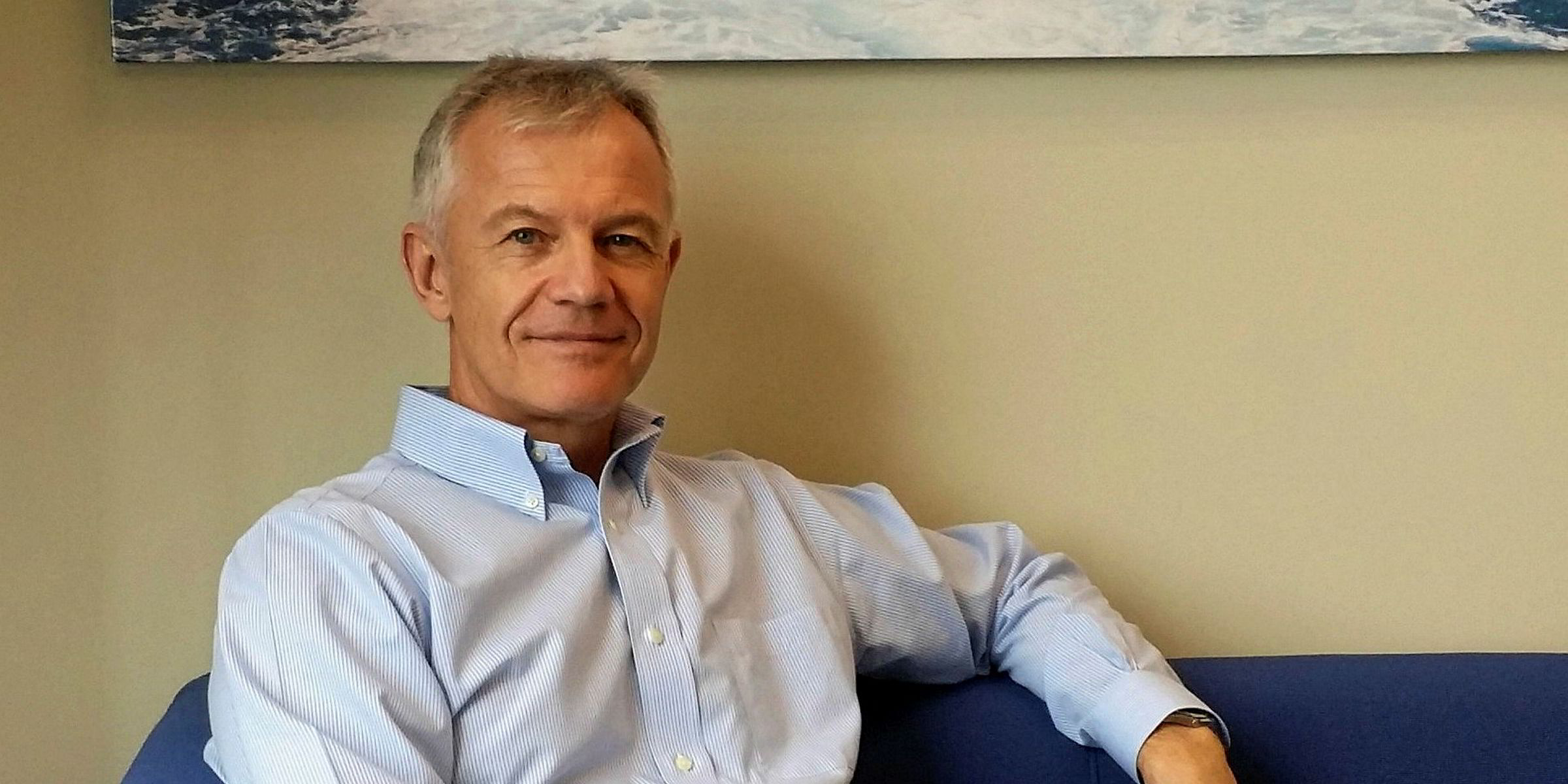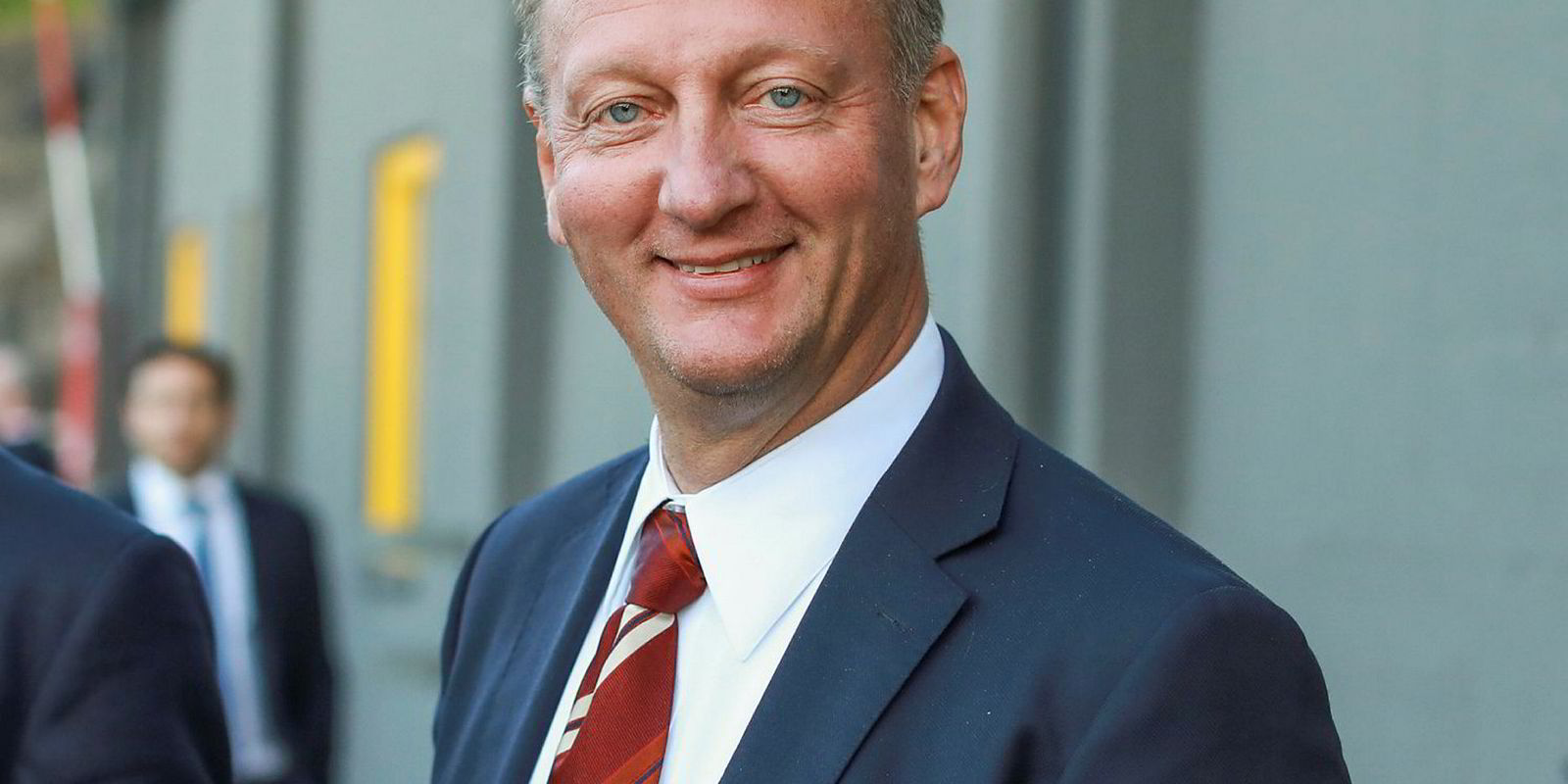Third-party shipmanagers today cover over 15% of the world fleet with more than 8,700 individual ships under their watch, according to data provided to TradeWinds.
While this leaves almost 50,000 vessels managed by shipowners, specialists describe a market that is seeing increased demand and attracting the attention of institutional investors.
Carl Schou, president and chief executive of Wilhelmsen Ship Management, says: “Compared with the last couple of years, it has definitely picked up, that’s for sure. It’s quite positive. We see there are lots more tender requests out there and lots more business. It’s not that often I’m so positive as I am now.”
I think eventually the Greek market will go the same way [as Japan]
Data provided by V.Group, the private equity-backed market leader, shows there are 8,764 ships managed by third-party service providers today. Its numbers show tankers to account for the largest slice of third-party vessels, narrowly ahead of bulk carriers, and general cargo and passengerships.
Fleet expansion
OSM Marine Group chief executive Geir Sekkesaeter, whose company saw financial heavyweight Oaktree Capital Management become a major shareholder this summer, says much of the growth is coming from existing customers who are expanding their fleets, rather than shipowners opting for a change of management strategy.
“We would not mind having more customers, but we see a large portion of what we have managed to grow over the years is from existing customers,” he says. “For us, it’s important to have these customers that are growing and those who have the same way of looking at life and business.”

Bjorn Hojgaard, chief executive of Anglo-Eastern Univan, says the industry today is no longer seen as an inferior option, as it was perceived by some back in the 1970s and 1980s. Today, it is attracting a lot of interest from institutional money, a trend observed throughout the shipping services arena.
He says the fine net of regulations and vetting machines in shipping has made shipmanagement of ships more commoditised and a healthy proposition for shipowners.
Japanese shipowners are the largest users of third-party management services, according to V.Group figures provided to TradeWinds. The 1,229 Japanese-owned ships under management are nearly double the total of 628 from second placed Norway.
Greece in third place
The US, with 552 ships under third-party management, and Chinese owners, with 470, are also ahead of the world’s largest shipowning nation, Greece, which has 398 vessels, the figures show. Germany, Singapore and South Korea are the other nations where shipmanagers are finding the most demand for their services.
Hojgaard says Japan’s leading position as a user of shipmanagement services is due to the decline of the country as a seafaring nation.
“Japan used to be a home-grown market, with home-grown management and home-grown vessel superintendents,” he says. “But over time, there were fewer and fewer Japanese going to sea. Now it is a real rarity to see a Japanese seafarer.
“Because of that, there are fewer and fewer who end up in shore-based shipmanagement positions. This makes the Japanese owners go to the shipmanagers and say, ‘I need good crew from India or the Philippines and I need an organisation with some scale and depth to take in my ships without it being an extraordinary effort’.
"I think eventually the Greek market will go the same way.”
Changes opening doors
For now, however, it is changes in the shipowning landscape that are helping open doors for shipmanagers to find new clients.
“Today on the owning side, people buy and sell fleets, not ships,” Hojgaard says.
He says an owner who has a fleet of 20 bulkers and an equal number of chemical tankers may decide to exit one of those markets. This would require the company to lay off a lot of crew it has spent a lot of time and money training, and a lot of shore-based staff as well.
“Five years later you decide to get back into that market and you buy another fleet of 20 ships. Suddenly you have to man them again and you will not have all those crew and all those shore staff on the shelf needed to run those ships,” he says.

“Owners who actively play their assets, which many owners do, for them to have the flexibility of using a shipmanager, someone with scale and someone for 20 ships in or out is not a life or death decision, who have the operational depth to cope with those sorts of movements without too much rocking the boat.”
Claes Eek Thorstensen, president and chief commercial officer of Thome Group, agrees it is easier to grow with a manager than if an owner has to hire all the people for themselves.
“If you are going to be in shipmanagement, you are going to need a certain scale to get contracts, to have a crew pool to drive, and you need skilled people so you build a competence base for yourself which is attractive,” he says.
“We are 700 to 800 people shore-based. If you are a shipowner with 20 or 30 vessels, you have limited resources in [and] out and limited growth possibilities.”
It is not just traditional growth-minded shipowners who are turning to shipmanagers. Traders have been building up their owned fleets again, with Trafigura widely believed to have placed its fleet of 35 tankers with two established names after a competitive tender process.
Traders equal good clients
Wilhelmsen Ship Management’s Schou says traders make good clients as they are not subject to the volatile markets and have a much more stable business case when investing in steel.
“That means also when they do it, they do it long term,” he says. “It’s not just asset play, and they tend to keep vessels at a high standard. Our experience so far is they are more long term, as shipowners are to a certain degree, more asset players.”
Thome’s Thorstensen adds: “ We also see leasing houses, which were traditionally only doing financial lease with a bareboat structure, are also starting to build tonnage as well. This is a relatively new market. These vessels and these fleets will definitely be outsourced to a shipmanager.”





